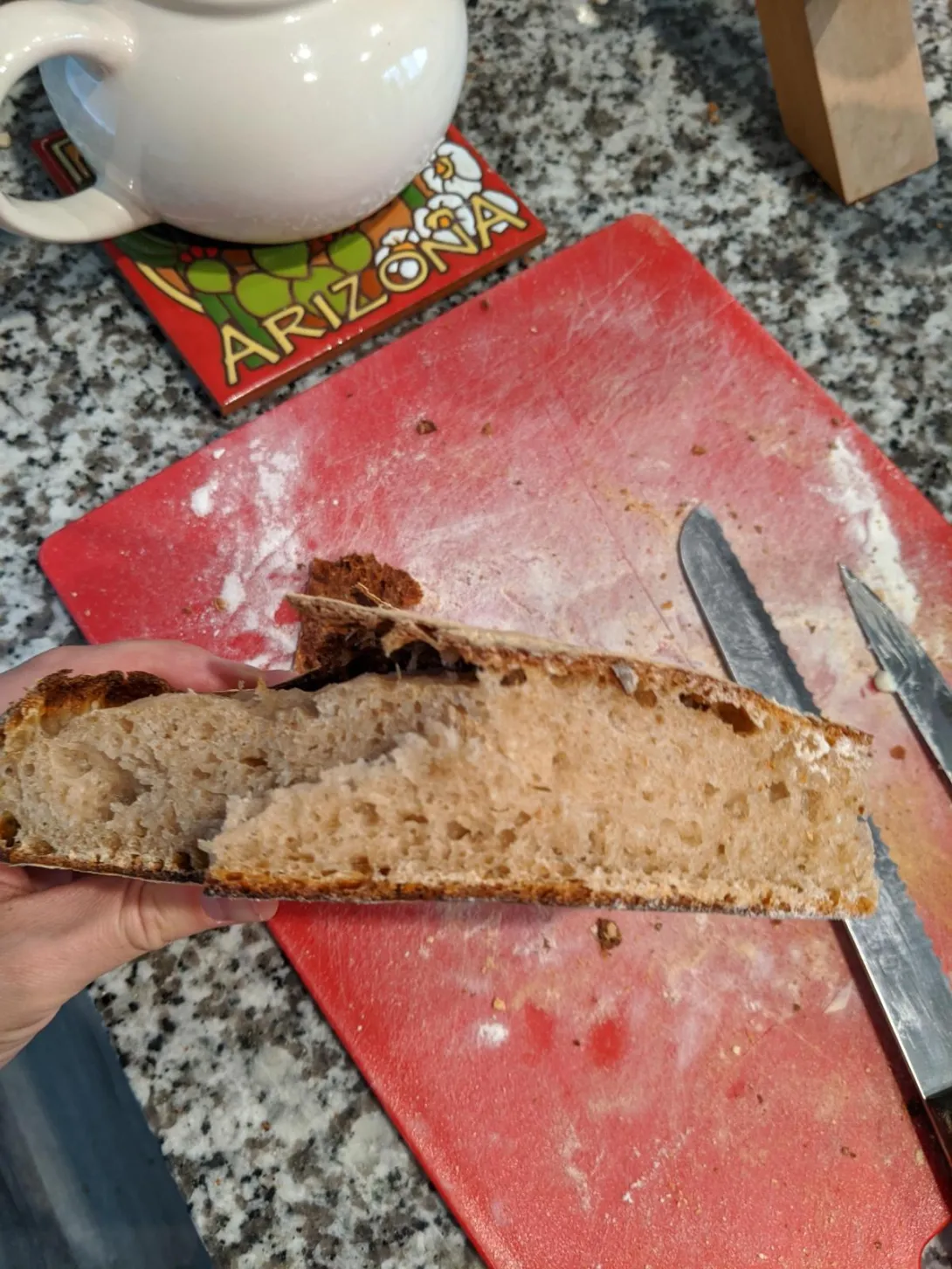
Here's your weekly sourdough trouble shooting plea. Out of about 12 attempts I have managed to bake a decent loaf, but I don't know why, and since then they have all been flat and gummy. First, the positives:
- Taste is amazing and sour
- Starter is on a regular, powerful, schedule
- Baking times and methods work
So with all that out of the way it comes down to proofing and mixture. the recipe has been consistent throughout with me dialing up or down the water content:
350g KA Bread Flour
260ml Water
150g whole wheat starter (1:1 hydration)
5g salt
I usually knead my dough until window pane, proof for about 3 hours in a warm proofing oven until just under doubled in size, knock back and proof over night in the fridge. The loaf that came out ok spent about 16 hours in the fridge.
My gut feeling is it's the final proof or the kneading. When I knock out of the banneton it deflates immediately no matter a short or long proof. Unless it taken right from the fridge to oven, it deflates. I have also tried a slap and fold, or a combo of kneading and turning a couple times throughout the first proof, but as time goes on the dough seems to get weaker and fall apart. I have tried an autolyse with minimal success or improvement (funny enough the loaf that came out good was whiter, maybe I used more bread flour than I thought? I figured out the starter and the bake, just trying to knock out some more variables and thought you all could help.
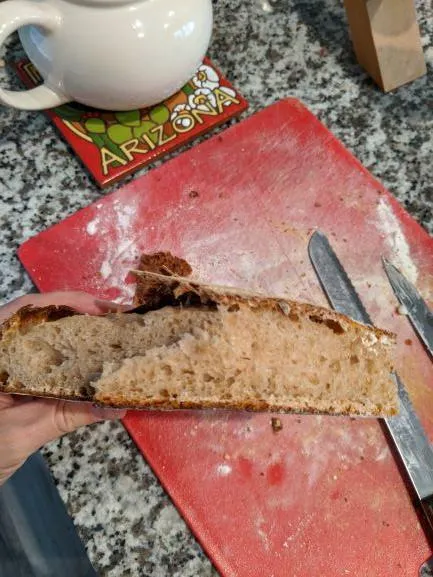
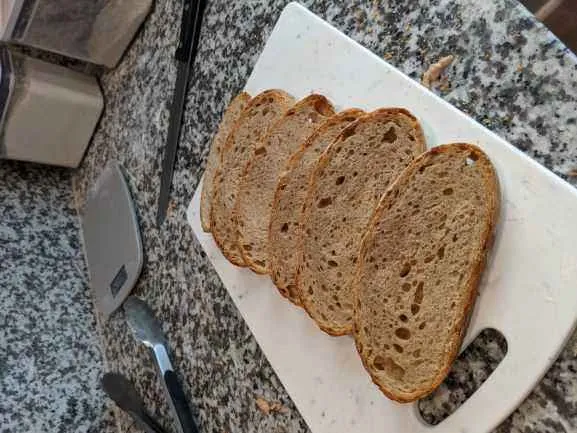
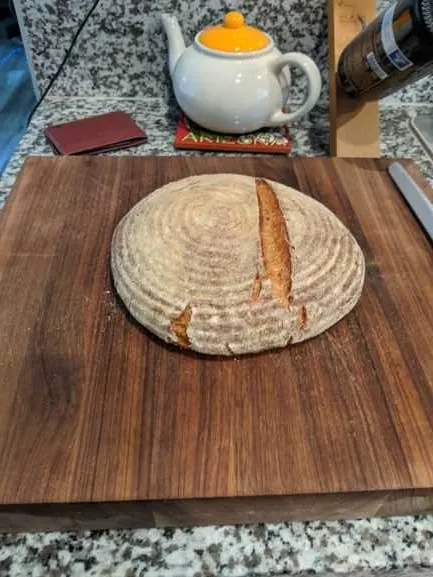
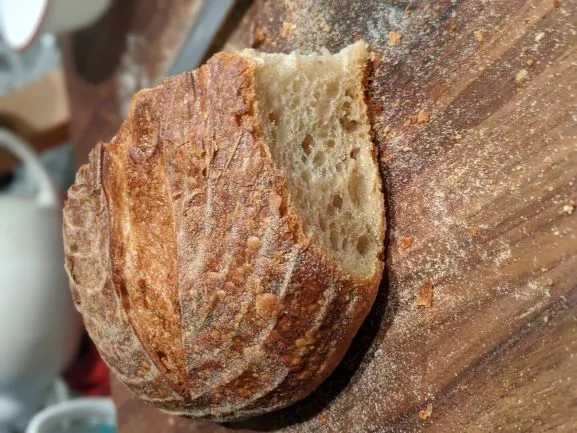
First, glad you got a good taste, to me that is more important that the looks. You might want to try reducing your bulk ferment. Many have reported ending bulk at 30% increase in volume and getting good results in the baguette thread. You might want to experiment with an aliquot jar to measure bulk fermentation.
I'll give that a shot, I don't think it's underproofed, so going to dial back the bulk for the next couple
Unless you are experienced with sourdough and high hydration, you will do better starting off with a much lower hydration. Your formula is ~79% hydrated using white flour. This is a challenging bake.
I agree! Haha I think I'm going to dial it back to 70% and go up from there, sometimes it's the simple answer (too much water). When I started baking the fear of God was put in me (DOUGH MUST BE SOAKING WET, DON'T ADD FLOUR, PROOF FOR 8 HOURS). But I'm learning to pay attention to what's actually happening with the dough.
Hi there, your salt is rather low around 1.1%, most bread recipes are about 2%. One reason I bring this up is that having less salt your fermentation will move much more quickly than if you used the usual % of salt. Your crumb shows typical signs of overproofing/over fermentation. In the top photo you already identified the flat shape, but also look at the signs of gluten breakdown illustrated by the separation of the crust from the crumb. As the dough gets more acidic from prolonged fermentation the proteolytic enzymes start to work more rapidly weakening the gluten sheets. Then during baking, as the gases expand the weakened gluten cannot hold back the increasing pressure and start to break. So instead of multiple cells you start to get larger cells.
I agree with Dan drop the hydration. I’d also go with about 8.5 g of salt for 2% so fermentation will move along at a more usual pace, the lower hydration will also slow fermentation a bit as well.
Benny
To add on to others' comments:
I have never really heard of knocking the air out of a sourdough loaf before. Sourdough yeast isn't as mighty and powerful as commercial yeast (which is actually a different species whose genetics are tightly managed!), so typically one tries to avoid losing any of the gas produced during the entire fermentation process.
I strongly believe that your second rise is a lot weaker than you are expecting, and the yeast aren't able to inflate the reworked gluten. Any puffiness you see is likely from superficial surface bubbles, which would explain why the loaf deflates on being turned out. This would also make sense with your observation that the loaf that rose was retarded for a very long time (16+ hours, so it had a fighting chance)
I suggest trying a sourdough loaf that you do not deflate after bulk. Instead, gently shape it into a tight boule after bulk, let rest for 25 minutes, or until it spreads into a pancake like-shape, and then gently do your final shaping before fridging.
Hello, I agree with a lot of the advice here about improving your result. Namely:
Upping the salt to 2%
Lowering the hydration to 70%-75%
Lowering the starter flour to at least 15% of the overall flour, 10% would be better. With that amount of starter, bulk fermentation would approximately 4-5 hours at room temperature. But it wont double in size. it will rise to about 50% (with the above specs)
The gumminess is a result of a breakdown of the gluten.
KA Bread flour is considered a good flour for sourdough, although some might say that KA AP Flour is more ideal.
If you are going to try it again with the same flour, may I suggest tweaking your knead method. Keep the autolyse for about 2 hours. I would say knead your dough, slap and fold technique sounds fine, until moderate gluten development. It is not necessary to achieve windowpane by this point. Then for the first two hours of bulk perform 4 sets of stretch and folds, every 30 min. Then 2 hour rest. Pre shape, rest 20min, final shape. Cold ferment like before. Score. Bake at 500F with steam for 20 min, then dry 450F, 20min
My guess is that KA Bread Flour is a blend of winter and spring wheat, probably leaning towards more spring than winter. This is the reason for all the folds during the bulk, the gluten needs to be kept strong throughout most of the bulk. That is why in your previous attempt, the loaf could not keep it's shape the gluten broke down.
This is not a perfect assessment, but I think that this might help.
Am I crazy? Isn't deflating the dough after bulk more likely the cause of the flat loaves vs salt/starter ratios?
Years ago, there were many that suggested punching down the dough. Some episodes of Julia Child had the guest actually making a fist and punching it. According to Alton Brown, during BF , yeast consume the food nearest to them, but don't have ability to move, so they eventually run out of food. Some of the handling at the end of BF is meant to redistribute the yeast so they get a new source of food. Some suggest a fairly aggressive handling that does seem to deflate the dough Hamelman - preshaping others suggest a more gentle approach, though still redistributing the yeast. In one of his lock down shows this year, Hamelman showed a tuck and turn move similar to that in the video at 1:50,
Thanks all! Less proving, more salt, no knocking back, and cooling it over night produced a beaut.
That is much better you should be proud.
Benny
Very nice work.